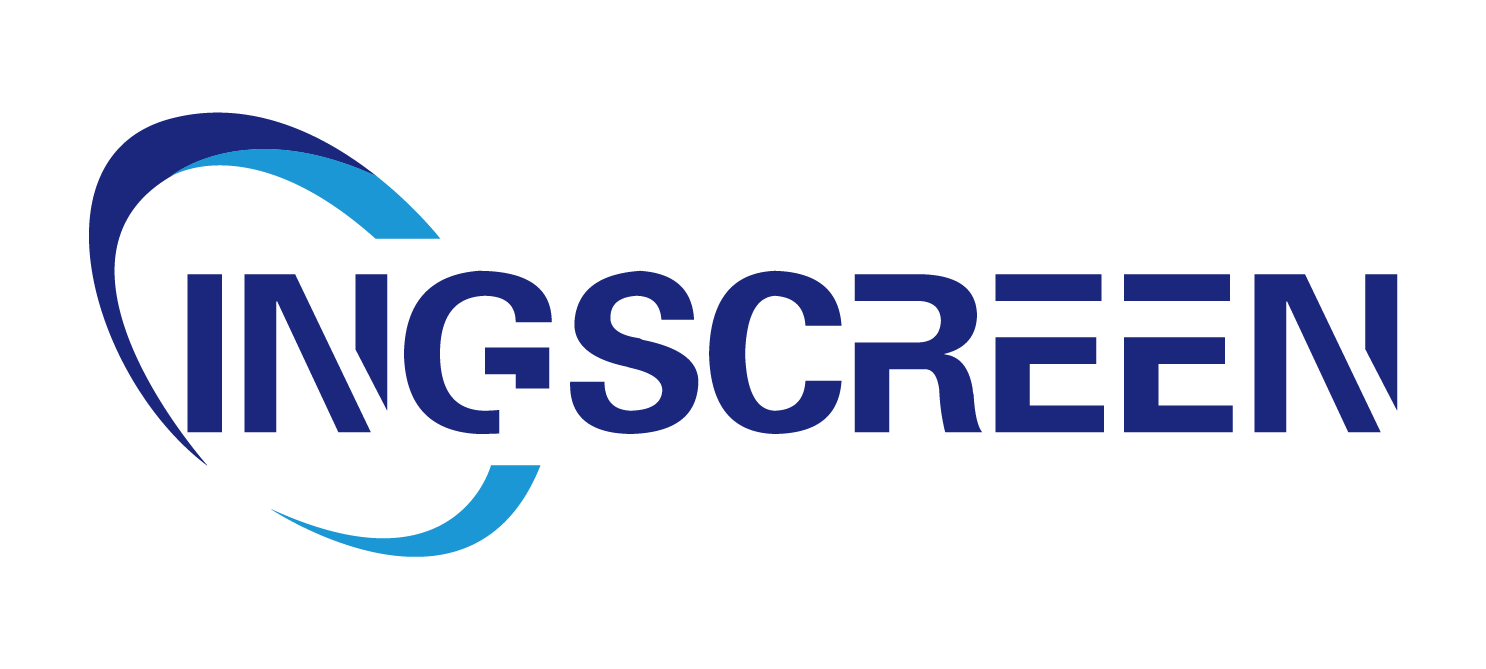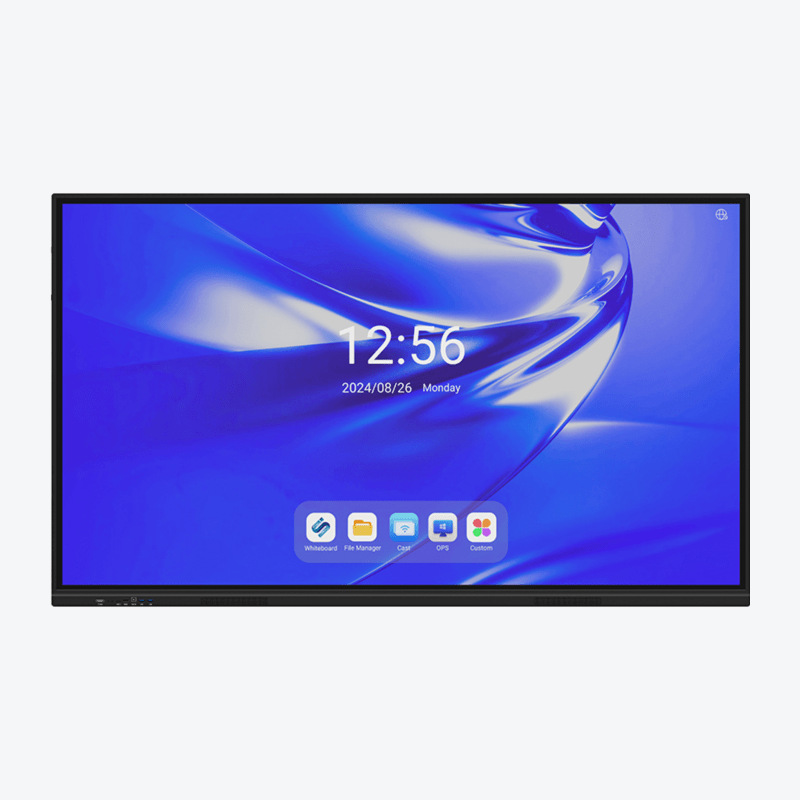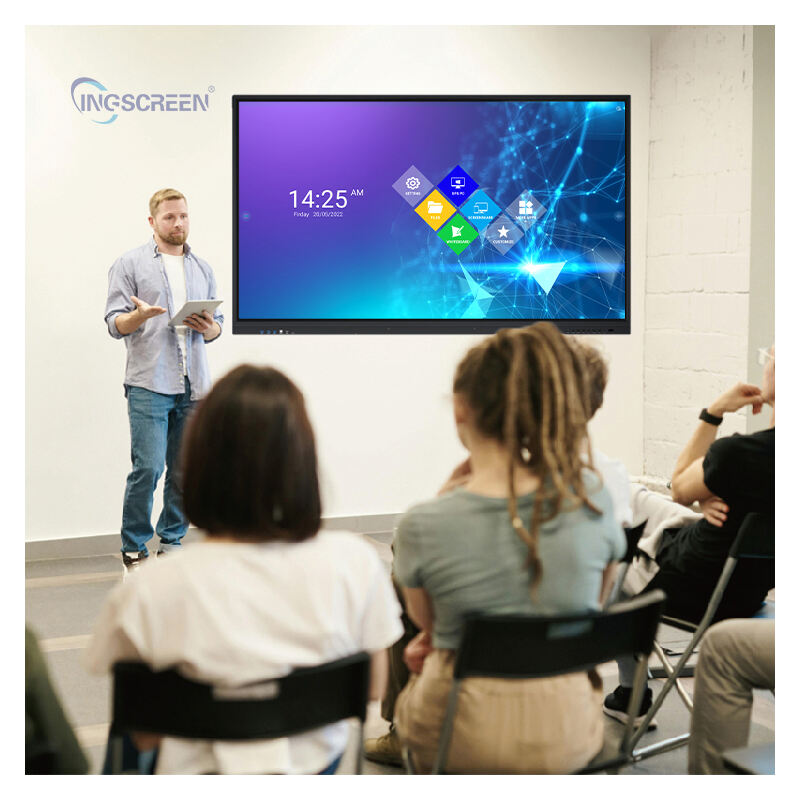Core Functionalities and Capabilities
Multi-Touch Interface and Touchscreen Technology
The inclusion of multi-touch technology in smart interactive flat panels is a game changer, enabling multiple users to interact simultaneously, which enhances collaborative efforts significantly. This capability allows seamless writing, drawing, and annotation by more than one individual at a time, making brainstorming sessions and collaborative projects more dynamic and efficient. When exploring the types of touchscreen technology, capacitive touchscreens are favored over resistive ones because of their durability and responsiveness. Capacitive screens, unlike resistive ones, recognize touch by the conductivity of the user's finger, making them more reliable and providing a smoother interactive experience.
Industry statistics highlight the positive impact of multi-touch interfaces on user satisfaction and productivity. For instance, educational environments using these interfaces have noted a marked improvement in student engagement and interaction. According to a recent survey, 90% of users reported increased productivity due to the enhanced usability of multi-touch technology. This speaks to the importance of integrating advanced touch capabilities into smart panels for both educational and professional settings.
Wireless Connectivity and Casting Solutions
Wireless connectivity is a cornerstone feature of smart interactive flat panels, facilitated by standards such as Wi-Fi and Bluetooth that support seamless integration with a variety of devices. This connectivity enables users to connect laptops, smartphones, and tablets wirelessly without the hassle of tangled cables. Alongside these basic connectivity options, casting solutions like Chromecast and Apple AirPlay have been game-changers. These technologies enable effortless content sharing from mobile devices directly onto the panel, making presentations and media sharing swift and straightforward.
Studies have shown that wireless solutions reduce clutter in meeting spaces and enhance efficiency by allowing participants to focus more on the content and collaboration. Case studies reveal that organizations that utilize wireless connectivity report a 30% increase in meeting efficiency. Such solutions not only reduce physical hindrances but also foster a more engaging and collaborative environment, enhancing the overall productivity in various settings.
Smart OS Integration and Built-In Applications
Smart interactive flat panels are equipped with advanced operating systems, such as Android and Windows, providing user-friendly interfaces that are intuitive and easy to navigate. These smart OS integrations offer a plethora of functionalities tailored to enhance productivity and user engagement. One of the significant benefits of having a smart OS is the availability of built-in applications that aid in daily operations and activities. Common applications include calendars, video conferencing tools, and collaborative software that facilitate seamless business operations.
The integration of smart features leads to noticeable productivity improvements. Research suggests that firms adopting these integrated systems noticed a 25% enhancement in task management and user engagement. Users are often more inclined to engage with technology that feels intuitive and helpful in simplifying their day-to-day tasks, making smart OS integration a vital component of modern interactive flat panels.
Advanced Features for Enhanced Productivity
Cloud-Based File Management Systems
Cloud-based file management systems in smart interactive flat panels significantly enhance accessibility and collaboration. By offering cloud storage options, these systems allow users to access and share files anytime, anywhere. Security is a critical aspect of cloud-based systems, and many incorporate robust measures such as encryption and multi-factor authentication to safeguard sensitive information. Companies like Google and Microsoft offer integrated services that demonstrate improved workflow efficiency. For instance, many businesses report quickened processes and seamless collaboration due to cloud integration, aligning with emerging trends in digital workspaces.
Real-Time Annotation and Digital Whiteboarding
Real-time annotation tools available on smart panels revolutionize the way presentations and workshops are conducted, engaging users through instant mark-ups and interactive feedback. These smart panels offer digital whiteboarding features that enhance participation, allowing everyone to contribute actively. Research from the educational and corporate sectors shows that using visual aids through digital whiteboarding improves comprehension and retention. Such tools not only foster engagement but also create dynamic environments where ideas can flourish collectively.
Multi-Format Content Compatibility
Smart interactive flat panels support a variety of file formats, catering to diverse presentation needs for users involved in education and business alike. They can handle PDFs, PPTs, videos, and more, ensuring that no content is left unattended due to format restrictions. This multi-format support is vital for creating inclusive and adaptable learning environments. Software tools such as format converters further enhance usability by allowing seamless transitions between different content formats, underscoring the importance of adaptable technology in effective communication and collaboration.
Advantages Over Traditional Display Systems
Resolution and Image Quality Differences
The leap in resolution and image quality from traditional display systems to smart interactive flat panels is profound. Typically, these panels offer 4K resolution, vastly superior to the standard resolutions found in older displays. This enhanced clarity provides a more immersive viewer experience, allowing users to detect even the finest details in visuals. Data highlights that these panels have exceptional brightness and contrast ratios, ensuring vibrant colors and sharp images. Feedback from users consistently points to improved effectiveness in presentations and educational settings because the higher quality images capture and hold attention better. The advancement in resolution and image quality is indeed a game-changer for visual communications.
Interactive Capabilities vs. Projection Limitations
Unlike traditional projectors, smart interactive flat panels boast advanced interactive capabilities such as touch and gesture control, which vastly outperform the limitations of older technologies. These interactive features facilitate active participation and engagement, turning passive sessions into dynamic experiences. For instance, users can interact directly with the content, manipulating data or drawing attention to specific points, which significantly increases involvement. A survey within the educational sector reported a noticeable increase in student engagement and participation when interactive displays were used, as they enable a more hands-on learning approach. This interactive capability is proving indispensable in fostering a collaborative environment in both educational and corporate settings.
Software Ecosystem Availability
The ecosystem of software available for smart interactive flat panels enhances their functionality greatly. These devices support a range of collaborative tools and applications, making them versatile allies in collaborative and learning environments. The availability of regular software updates ensures that these panels remain compatible with the latest technologies and can be seamlessly integrated into existing systems. Beneficially, enterprises utilizing these devices report smoother operation and increased productivity as they can leverage specialized software tailored to their needs, thereby enhancing workflow and efficiency. The comprehensive software ecosystem is an indispensable advantage, streamlining operations and enriching user experiences.
Screen Size and Room Configuration
Selecting the correct screen size is crucial when optimizing the performance of smart interactive flat panels. It starts with evaluating the room size and audience capacity to ensure everyone can comfortably engage with the content displayed. For instance, larger screens are better suited for vast conference rooms with sizeable audiences, whereas smaller panels fit perfectly in cozy meeting spaces. Understanding optimal viewing distances and angles is equally important. Proper placement reduces eye strain and improves engagement by allowing all participants a clear view. Surveys consistently highlight that matching screen size to room configuration significantly boosts user satisfaction. It is evident that consideration of these factors plays a pivotal role in maintaining participant enthusiasm and attentiveness.
Touch Accuracy and Responsiveness Requirements
Touch accuracy and responsiveness are key components in enhancing the user experience and maximize productivity with smart interactive flat panels. If touch technology lacks precision, it can cause frustration and hinder seamless user interactions. Therefore, evaluating touch standards is essential in choosing panels that will deliver reliable performance. The importance of precise touch cannot be overstated, especially in environments where collaboration and interaction are vital. According to user feedback, poor touch responsiveness often leads to decreased user satisfaction and can impede effective communication. Prioritizing panels with superior touch accuracy can help prevent these issues and ensure a smooth interactive experience.
Security Protocols and Remote Management
Robust security protocols and efficient remote management are essential for protecting data and ensuring device integrity when using smart interactive flat panels. Implementing comprehensive security measures like encryption and authentication protocols safeguard sensitive information from unauthorized access. Additionally, remote management features allow IT teams to centrally monitor and control devices, making it easier to manage updates and troubleshoot problems without onsite presence. Statistical data indicate that incorporating stringent security protocols significantly reduce incidents of breaches and unauthorized use. By leveraging these features, organizations can maintain secure, efficient operations while benefiting from advanced interactive technology.
AI-Powered Collaboration Features
Artificial Intelligence (AI) is paving the way for a more personalized and efficient user experience in smart interactive flat panels. Through the integration of AI collaboration features, these panels can offer unique recommendations for collaboration, optimizing meeting outcomes. For instance, AI-driven functionalities like speech recognition facilitate smoother communication during meetings, allowing for real-time transcription and translation. Moreover, automatic note-taking capabilities enable participants to focus more on the discussion rather than on taking notes. Predictions indicate that AI will continue to revolutionize interactive panel capabilities, making them integral to modern-day businesses by providing smart suggestions, seamless content management, and enhanced interactive features. As AI becomes more sophisticated, we can anticipate even more groundbreaking features that will elevate digital collaboration further.
Advanced Remote Maintenance Capabilities
The future of smart panel technology lies significantly in its advanced remote maintenance capabilities. These allow IT teams to perform troubleshooting and routine checks remotely, reducing equipment downtime significantly. By enabling predictive maintenance, these systems can prevent potential failures before they occur, ensuring consistent performance. This proactive approach not only enhances system reliability but also translates to substantial cost savings by minimizing unexpected repairs and operational halts. Businesses can expect significant reductions in maintenance costs and an increase in operational efficiency, as indicated by recent data on cost-effectiveness derived from comprehensive remote management solutions. These capabilities are set to become the norm, further solidifying the indispensability of smart interactive panels in business environments.

Emerging Display Resolution Standards
In the realm of smart interactive flat panels, emerging display resolution standards like 8K are expected to radically transform presentation clarity and detail. These advancements in resolution are essential for delivering crystal-clear visuals, vital for effective communication and engagement during meetings. As display technology progresses, smart panels will become even more sophisticated, featuring richer colors and sharper images that enhance the overall visual experience. Market trends are already showing an increasing adoption of higher resolution displays, which provides a glimpse into the future where ultra-high-definition will become standard. The evolving landscape of display technology promises not only to improve visual presentation clarity but also to enhance the collaborative potential of smart panels across various industries, making them more effective and appealing for professional use.
FAQ
What are the benefits of multi-touch technology in smart panels?
Multi-touch technology allows simultaneous interaction by multiple users, enhancing collaborative efforts, making brainstorming sessions more dynamic, and providing a more efficient interactive experience.
How does wireless connectivity enhance smart panel usage?
Wireless connectivity allows seamless integration with devices like laptops, smartphones, and tablets, reducing clutter and increasing meeting efficiency by enabling effortless content sharing.
Why is smart OS integration important in interactive flat panels?
Smart OS integration provides user-friendly interfaces and built-in applications that boost task management and user engagement, making daily operations more efficient.
How do cloud-based file management systems benefit smart panels?
They enhance accessibility and collaboration by allowing users to access and share files anytime, ensuring data security with robust protection measures.
What is the role of AI in enhancing interactive panels?
AI provides personalized experiences with features like speech recognition and automatic note-taking, optimizing meeting outcomes and enhancing collaboration efficiency.
Table of Contents
- Core Functionalities and Capabilities
- Advanced Features for Enhanced Productivity
- Advantages Over Traditional Display Systems
- Screen Size and Room Configuration
- Touch Accuracy and Responsiveness Requirements
- Security Protocols and Remote Management
- AI-Powered Collaboration Features
- Advanced Remote Maintenance Capabilities
- Emerging Display Resolution Standards
-
FAQ
- What are the benefits of multi-touch technology in smart panels?
- How does wireless connectivity enhance smart panel usage?
- Why is smart OS integration important in interactive flat panels?
- How do cloud-based file management systems benefit smart panels?
- What is the role of AI in enhancing interactive panels?




